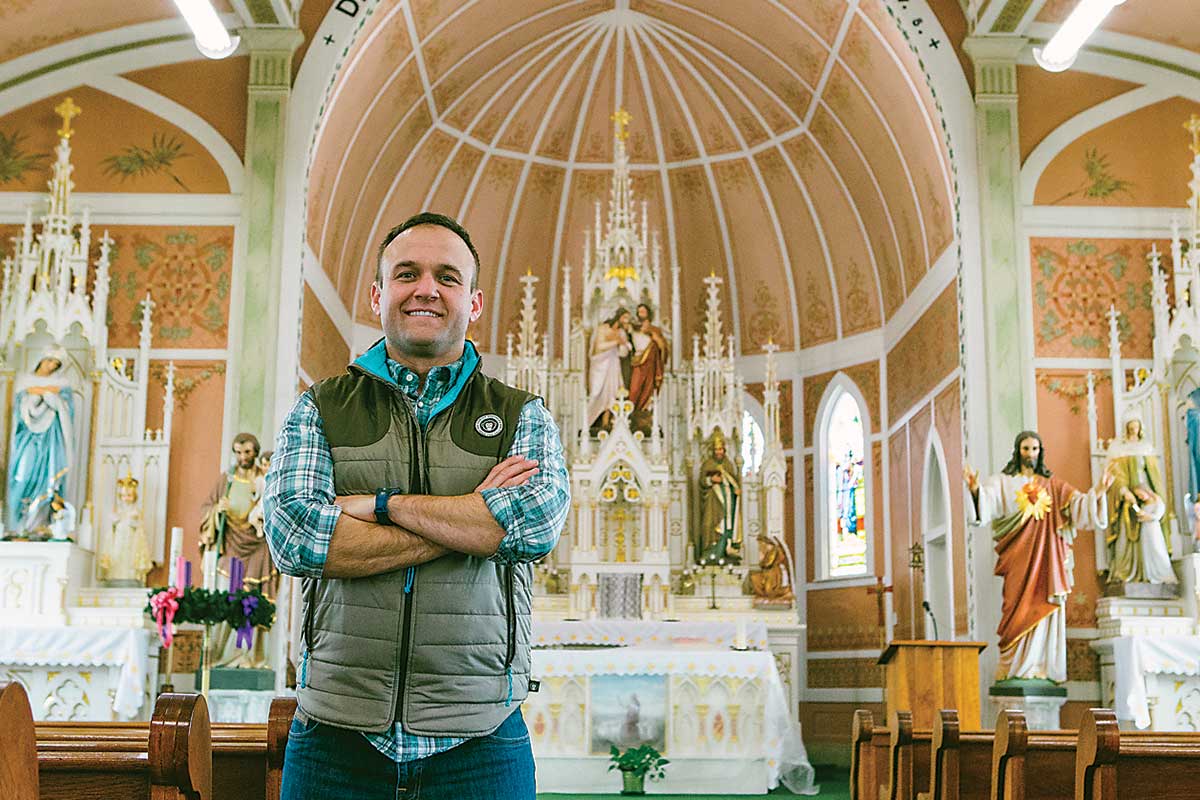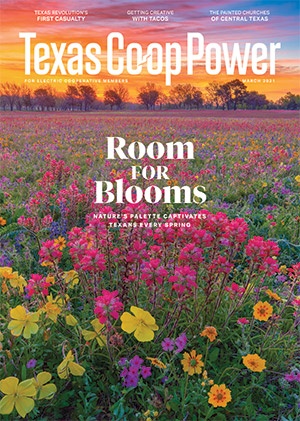A tour of Texas back roads takes you past prosaic scenes such as pastures full of grazing cows, profiles of spinning windmills and rural churches quietly awaiting their Sunday congregations. For most of these outlying houses of worship, a simple exterior foreshadows a modest sanctuary. That expectation changes in Fayette and Lee counties, where, concealed within unassuming facades, you’ll find Old World decorative glory inside the region’s painted churches.
I started my own churchgoing road trip with an apricot kolach because that’s what you do when visiting Texas Czech country. I was on a mission to visit the area’s five painted churches that are hidden in plain sight within the Czech and German communities that dot the map. My first stop was Dubina.
I pulled into a dirt parking lot and shrugged at what appeared to be an ordinary white building known as Sts. Cyril and Methodius Church. As soon as I stepped inside, I was transported to a world of sacred traditions and intricate religious art. From floor to ceiling, the room dazzled in bright colors and inlaid metals adorning the altars and statues of saints.

Chet inside St. John the Baptist Catholic Church in Ammannsville.
Courtesy Chet Garner
It was clear that the Czech immigrants who built this church in the late 1800s took great pride in their work and sought to recreate the traditions and artistry of their European homeland here in Texas.
I spent the entire day driving, relying on my GPS so I didn’t miss a turn down an obscure road in Fayette or Lee counties. From St. Paul Lutheran in Serbin to St. John the Baptist Catholic Church in Ammannsville, each sanctuary had its own feel and history. In the ornately painted St. Mary Catholic Church in High Hill, known as the “Queen of the Painted Churches,” the wooden columns looked just like marble. I felt transported to Europe without leaving Texas.


